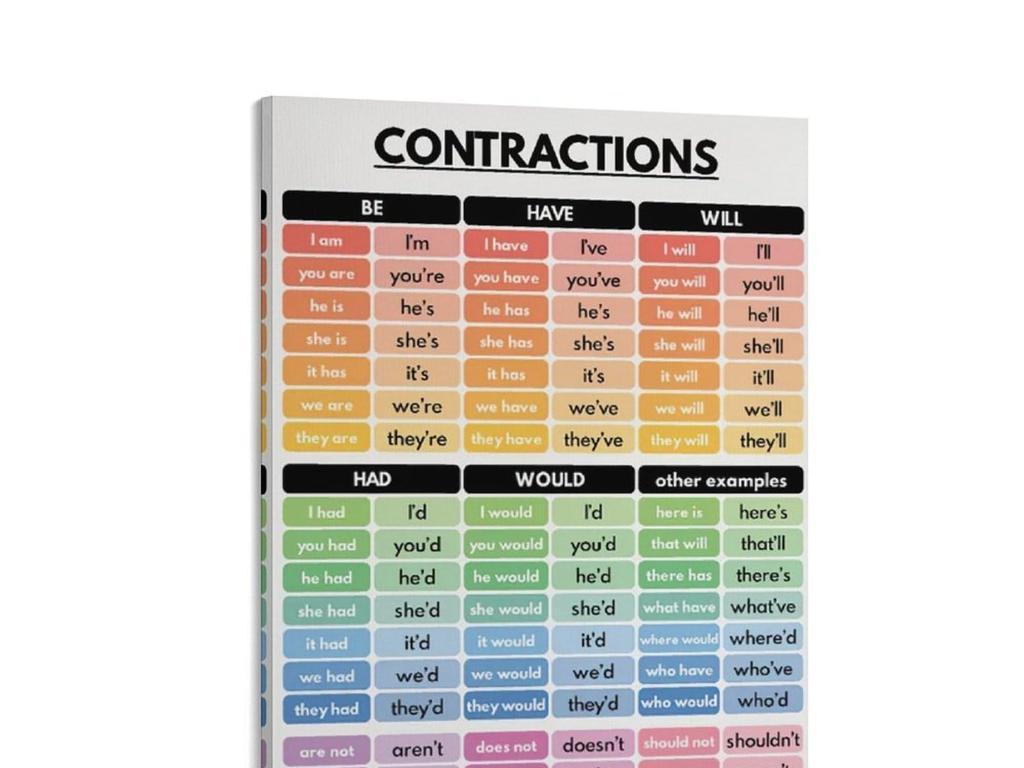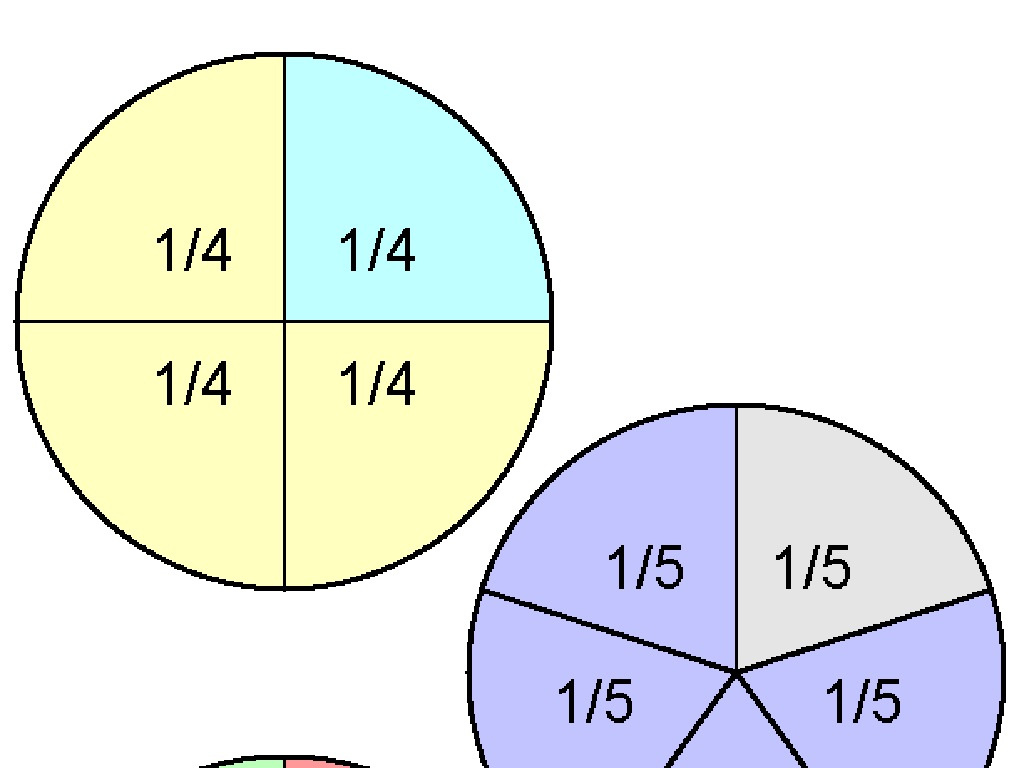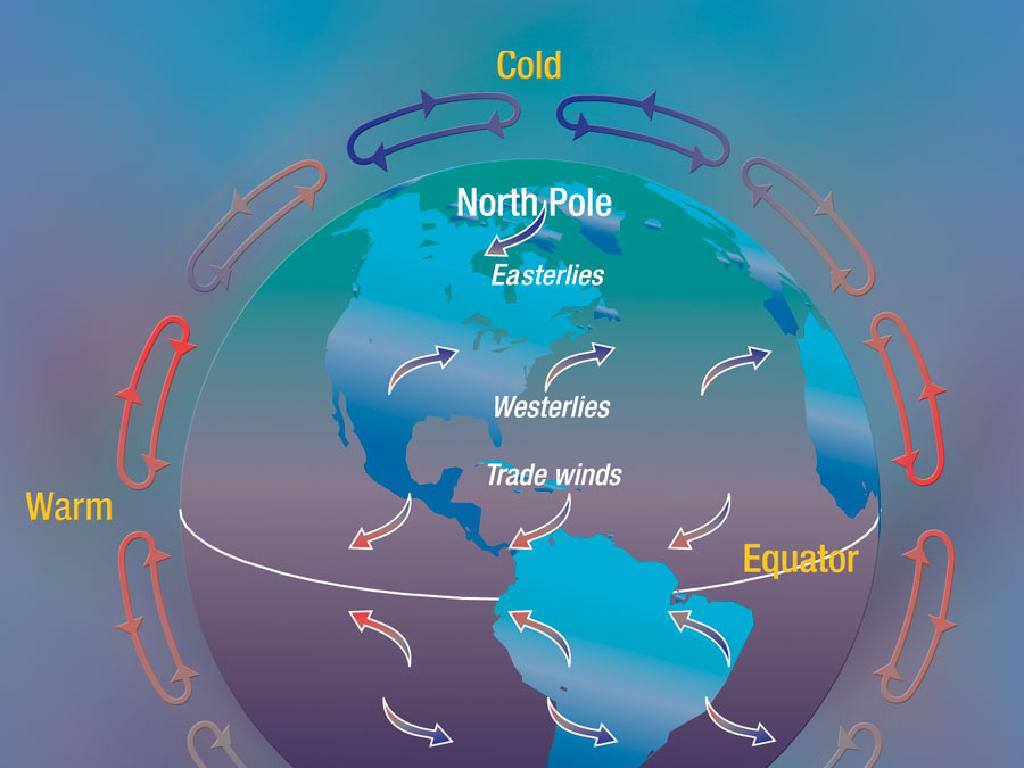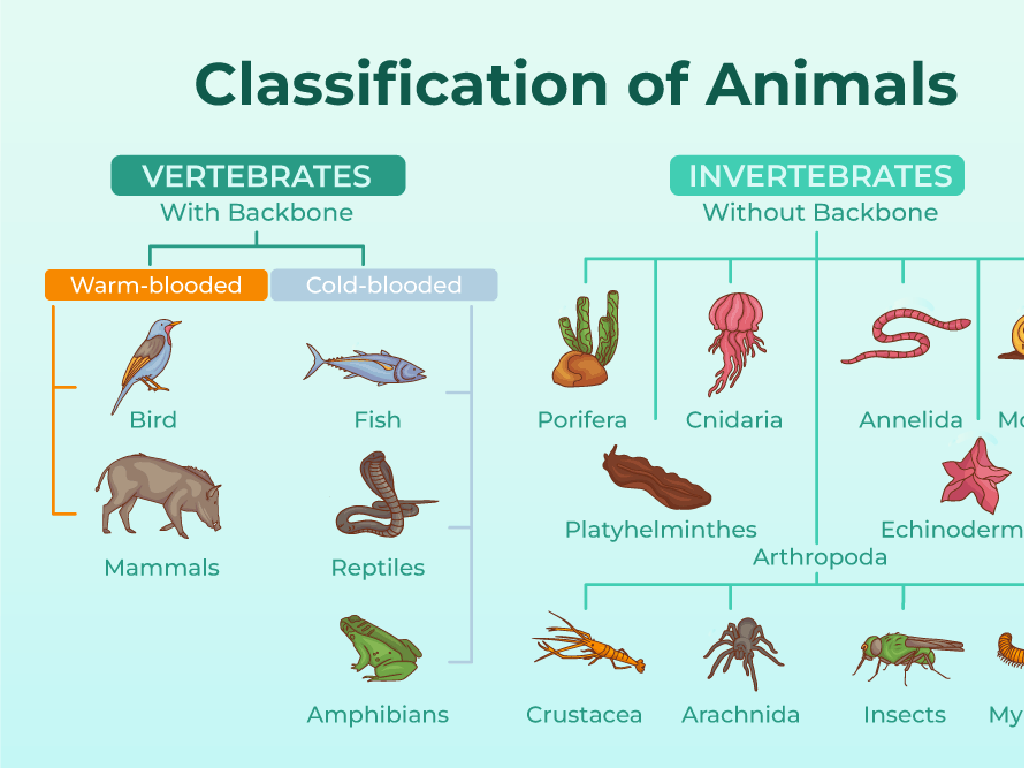Introduction To Natural Selection
Subject: Science
Grade: Seventh grade
Topic: Adaptations And Natural Selection
Please LOG IN to download the presentation. Access is available to registered users only.
View More Content
Welcome to Natural Selection
– Species evolution over time
– Species adapt to their environment gradually.
– Who was Charles Darwin?
– Darwin: Naturalist who formulated the theory of natural selection.
– Exploring natural selection
– Natural selection: Survival of the fittest.
– Today’s lesson objectives
– Understand natural selection and its impact on species.
|
This slide introduces the concept of natural selection, a fundamental mechanism of evolution. Begin by explaining how species change and adapt over time due to environmental pressures. Introduce Charles Darwin as the scientist who developed the theory of natural selection. Provide a brief overview of natural selection, often summarized as ‘survival of the fittest,’ where individuals best adapted to their environment are more likely to survive and reproduce. Outline the objectives for today’s lesson, which include understanding the principles of natural selection and recognizing its role in shaping the diversity of life on Earth. Engage students by asking them to think of examples where they believe natural selection is at work.
Understanding Adaptations
– Define biological adaptation
– An adaptation is a trait that helps an organism survive and thrive in its environment.
– Adaptation examples in species
– Camouflage in chameleons, water conservation in cacti.
– Adaptations aid survival
– Traits like thick fur in polar bears protect against cold, aiding survival.
– Adaptations boost reproduction
– Bright feathers in peacocks attract mates, enhancing reproductive success.
|
This slide introduces the concept of adaptation in the context of biology. Adaptation refers to a physical or behavioral characteristic that has developed to allow an organism to better survive in its environment. Examples include the camouflage of chameleons, which helps them avoid predators, and the ability of cacti to conserve water in arid environments. These adaptations are crucial as they contribute to an organism’s survival by protecting against environmental challenges and to reproduction by attracting mates or fending off rivals. Encourage students to think of other examples and consider how these adaptations may have evolved over time.
Charles Darwin and Natural Selection
– Who was Charles Darwin?
– A naturalist who developed the theory of natural selection.
– Darwin’s HMS Beagle voyage
– His observations on this journey greatly influenced his thinking.
– Origin of natural selection theory
– Darwin theorized species evolve over time by natural selection.
– Darwin’s lasting impact
|
Charles Darwin was a 19th-century naturalist whose work on the theory of natural selection became the foundation for evolutionary biology. His five-year voyage on the HMS Beagle, particularly his observations in the Galápagos Islands, led him to contemplate the variation in species. This presentation slide aims to introduce students to Darwin’s background, his significant journey, and how it contributed to the inception of his groundbreaking theory. Emphasize Darwin’s impact on science and how his ideas continue to influence our understanding of the natural world. Encourage students to reflect on the importance of observation and critical thinking in scientific discovery.
Natural Selection Explained
– Understanding natural selection
– A process where organisms better adapted to their environment tend to survive and produce more offspring.
– Key concepts: Variation, Competition, Inheritance
– Variation: Differences among individuals. Competition: Organisms compete for resources. Inheritance: Traits passed from parents to offspring.
– ‘Survival of the fittest’ explained
– It’s not about strength, but the best fit for the environment.
– Natural selection in action
|
This slide introduces the concept of natural selection, a fundamental mechanism of evolution. Start by explaining that natural selection is a natural process where organisms that are better adapted to their environment tend to survive longer and have more offspring. Highlight the three key concepts: variation (differences among individuals in a population), competition (the struggle between organisms for the same resources), and inheritance (traits passed from parents to offspring). Clarify that ‘survival of the fittest’ doesn’t necessarily mean the strongest; it refers to the best fit between organisms and their environment. Provide examples like camouflage in animals or drug resistance in bacteria to illustrate natural selection in action. Encourage students to think of other examples they may have observed or learned about.
Variation in Species: The Foundation of Natural Selection
– Causes of species variation
Variation occurs due to differences in DNA and life experiences.
– Role of genetic mutations
Random changes in genes can lead to new traits.
– Environmental factors’ impact
Climate, food, and activities can influence how traits develop.
– Variation’s significance in natural selection
Variation allows natural selection to increase a species’ adaptation over time.
|
This slide introduces the concept of variation within species, which is crucial for understanding natural selection. Variation can be caused by genetic mutations, which are random changes in an organism’s DNA, and by environmental factors such as climate, diet, and lifestyle. These variations are important because they provide the raw material upon which natural selection acts. Without variation, all members of a species would be identical, and there would be no opportunity for advantageous traits to become more common over generations. Discuss examples like the peppered moth and Darwin’s finches to illustrate how variations can lead to better survival in changing environments.
Natural Selection in Action
– Real-world natural selection
– Examples show how species adapt over time
– Peppered moth evolution
– Moths changed color due to pollution during the Industrial Revolution
– Antibiotic-resistant bacteria
– Bacteria evolve to survive despite antibiotics
– Impact on species survival
|
This slide aims to illustrate the concept of natural selection with tangible, real-world examples that students can easily grasp. Begin by explaining how natural selection is not just a theory but a force observed in nature. The peppered moth is a classic example, where the species’ coloration shifted from light to dark due to industrial soot darkening the trees they rested on, giving darker moths a survival advantage. Antibiotic resistance is another example, where bacteria mutate and those resistant to antibiotics survive to reproduce, leading to a population of resistant bacteria. These examples help students understand the impact of environmental changes on species survival and evolution. Encourage students to think critically about how these changes affect the balance of ecosystems.
Misconceptions about Natural Selection
– Not ‘survival of the strongest’
– It’s about the best fit for the environment, not just strength
– A gradual, not instant, process
– Changes occur over many generations, not suddenly
– Natural vs. Artificial selection
– Natural selection is random, artificial is human-directed
– Understanding selection correctly
|
This slide aims to clarify common misunderstandings about natural selection. It’s crucial to emphasize that ‘survival of the fittest’ refers to an organism’s ability to adapt and reproduce in its environment, rather than brute strength. Highlight that natural selection is a slow process that happens over numerous generations, with beneficial traits becoming more common over time. Contrast this with artificial selection, where humans breed plants or animals for desired traits. Use examples like the peppered moth’s color changes during the Industrial Revolution for natural selection and dog breeding for artificial selection. Encourage students to think critically about how these concepts apply to the world around them.
Class Activity: Bird Beak Buffet
– Simulate bird feeding adaptations
– Use tools as beak models
Tweezers, chopsticks, spoons represent different beak shapes
– Gather various ‘bird foods’
Small food items like seeds, marshmallows, and gummies
– Observe beak function and food
Which ‘beak’ is best for each type of ‘food’?
|
This activity is designed to help students understand the concept of adaptation in natural selection, specifically how a bird’s beak shape can determine its ability to access and eat certain types of food. Students will use different tools to represent various beak shapes and try to pick up different small food items that represent different natural food sources. The objective is to observe which tool (beak type) is most efficient for each food type, illustrating the idea that certain traits, such as beak shape, can give an advantage in survival and reproduction. For the teacher: Prepare stations with different food types and corresponding tools. Guide the students to think about the challenges birds might face with different beak shapes. After the activity, facilitate a discussion on how this relates to natural selection and the survival of species.
Natural Selection: Summary & Look Ahead
– Recap of natural selection
– Natural selection is a process where the fittest organisms survive and reproduce.
– Natural selection’s role in biodiversity
– It creates a variety of life forms, adapting to different environments.
– Preview next lesson on adaptations
– We’ll explore how specific animals and plants adapt to their habitats.
– Encourage questions and discussions
|
As we conclude today’s lesson, ensure that students have a solid understanding of natural selection as the driving force behind the survival and reproduction of organisms best suited to their environment. Highlight how this process leads to the rich diversity of life we see on Earth. Next class, we’ll dive into the fascinating world of animal and plant adaptations, examining how different species have uniquely evolved to thrive in their specific ecosystems. Encourage students to bring any questions they have to the next lesson for a lively discussion.





